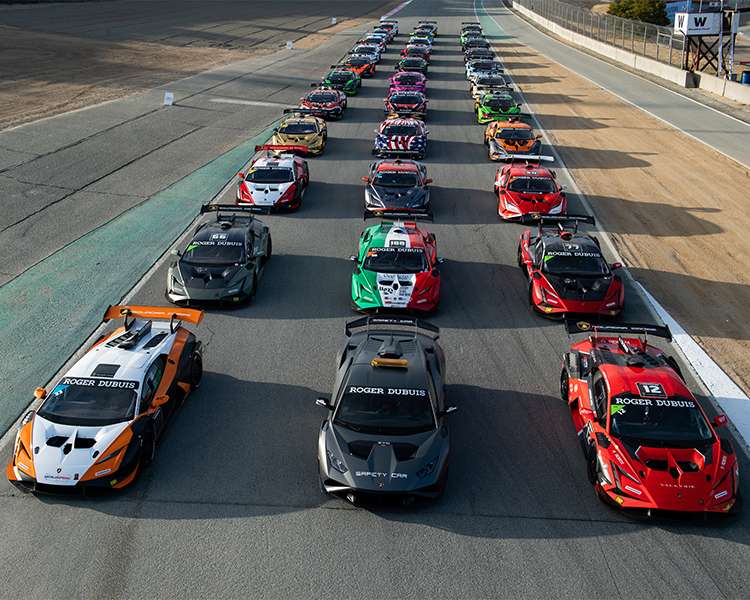

Brand Heritage is a cornerstone of success for luxury automotive brands like Audi and Lamborghini. These brands’ rich histories profoundly influence consumer perception, driving loyalty and shaping their identities. Brand heritage isn’t just about the past; it’s about connecting the past with the present, ensuring a legacy that continues to resonate with customers. This article will examine how Audi and Lamborghini leverage their rich histories to establish strong brand identities, appealing to current and future customers, and highlighting the importance of heritage in the automotive industry. This exploration will delve into the specific historical elements, showcasing how they contribute to the unique positioning of each brand. We will unpack the legacy of these iconic brands through specific examples.
The Power of Brand Heritage in the Automotive Industry
Shaping Identity and Perception
Brand heritage profoundly influences consumer perception in the automotive industry. Customers often connect with brands that have a strong history and values, often perceiving them as established and reliable. This sense of trust and quality extends to the perceived value proposition of the vehicles. The automotive industry thrives on innovation and constantly evolving designs, but the emotional connection to a storied past plays a vital role. Luxury brands such as Audi and Lamborghini harness the power of their heritage to differentiate themselves in the competitive market, ensuring their products and marketing resonate with an audience that is not only interested in the latest technologies but also appreciates the legacy behind the wheel.
Building Trust and Loyalty
A strong brand heritage often fosters trust and loyalty among customers. Consumers are drawn to brands with a history of quality, innovation, and a coherent set of values. This trust translates to increased customer lifetime value and brand advocacy. Successful automotive brands understand that their past, in conjunction with their present strategies, builds their future.
Audi’s Storied Past
From Racing to Road
Audi’s heritage is deeply rooted in motorsport history. Starting with their early successes in racing, Audi established a reputation for engineering excellence, driving innovation, and pushing the boundaries of automotive technology. Their commitment to innovation resonates through their designs and engineering, creating cars renowned for both power and performance. This legacy plays a pivotal role in Audi’s marketing strategies, influencing customer perceptions of the brand as a premium, trustworthy, and technologically advanced entity.
The Quattro Technology and Beyond
One of Audi’s most significant contributions to automotive history was the Quattro all-wheel-drive system. The Quattro system’s success in rallying proved its superior performance, which led to its adoption in road vehicles and further solidifying Audi’s reputation for engineering innovation. These technological advancements, interwoven with the history of motorsport success, have positioned Audi as a pioneering force in the automotive industry, a legacy that has attracted customers and continues to draw admiration and loyalty today.
Adapting the Legacy
Audi’s continued focus on technology and innovation has ensured that the brand remains relevant in the modern automotive landscape. They’ve seamlessly integrated their racing heritage with modern designs and features, ensuring a continuous connection between the past and the future, thereby maintaining a sense of legacy while driving innovation.
Lamborghini’s Legacy of Passion and Power
From Ferruccio to the Present
Lamborghini’s story began with the audacious vision of Ferruccio Lamborghini, a farmer turned automotive visionary. His initial focus was on producing powerful and stylish vehicles that transcended everyday driving expectations. This passion and determination have become defining elements of the Lamborghini brand, a core value appreciated by their devoted clientele.
Iconic Designs and Unwavering Performance
Lamborghini’s vehicles are renowned for their aggressive design and exceptional performance. From the iconic Miura to the cutting-edge models of today, Lamborghini continues to push boundaries in design and engineering. This devotion to performance resonates with a specific target audience deeply invested in expressing themselves through powerful automobiles. The designs incorporate a blend of classic cues and modern artistry, creating a compelling story that resonates with luxury car enthusiasts.
Maintaining the Edge
Lamborghini maintains its competitive edge by consistently reinventing itself, balancing its historical commitment to power and performance with the demands of the contemporary market. Embracing technological advances while upholding their distinctive designs, Lamborghini creates a seamless integration of past excellence and future-forward ambition.
The Intersection of Heritage and Innovation
Balancing Past and Present
Both Audi and Lamborghini have demonstrated the ability to maintain a sense of heritage while simultaneously embracing modern trends and innovations. This harmonious blend ensures that the brands remain relevant and desirable in today’s competitive landscape. It is a testament to the power of leveraging history to connect with the present-day consumer.
Building Emotional Connections
One effective approach to integrating brand heritage is through storytelling. Sharing the brand’s history through narrative marketing enables consumers to establish an emotional connection with the brand and its legacy. The narratives highlight the values, innovations, and triumphs that have shaped the brand’s evolution, fostering loyalty and brand advocacy.
Staying True to the Core Values
Ultimately, maintaining brand heritage requires a deep understanding of the brand’s core values. This understanding allows the brand to leverage its history to maintain its distinctiveness and stay true to its core while adapting to modern trends.
Marketing Strategies Reflecting Heritage
Storytelling and Visual Identity
Both Audi and Lamborghini effectively utilize storytelling in their marketing campaigns, frequently referencing their histories. Visual identity plays a critical role, with logos and marketing materials incorporating design elements that evoke the past. This deliberate approach ensures the brand’s legacy is prominently displayed.
Experiential Marketing
These luxury brands understand the importance of experiential marketing in conveying their rich heritage. Events and exhibitions focused on their history enable customers to engage with the brand on a deeper, more meaningful level. This often includes showcasing historical vehicles or recreating key moments from their past. Such events cultivate an environment where enthusiasts can experience the brand’s history and understand its impact.
Product Integration
The design elements and engineering features of contemporary models often incorporate aspects from the brands’ historical models. This subtle reference fosters a sense of continuity and legacy, reminding customers of the brand’s long and successful history.
Conclusion (Continued)
Case Studies (Continued)
Brand Evolution (Continued)
Frequently Asked Questions
What is the impact of brand heritage on consumer perception?
Brand heritage significantly impacts consumer perception, as it fosters trust and loyalty. Customers often connect with brands that have a strong history and values, often perceiving them as established and reliable. This perceived reliability often translates into higher customer satisfaction and brand advocacy.
How can brands leverage their heritage to attract and engage consumers?
Brands can leverage their heritage by sharing stories of their past, emphasizing the values that shaped the brand, and integrating these elements into marketing campaigns. Historical information can serve as a rich source of inspiration for marketing collateral, from storytelling to visual design. For example, emphasizing a brand’s commitment to innovation through past triumphs can communicate confidence to prospective buyers.
Can brands maintain a sense of heritage while adapting to modern trends?
Absolutely! Brands with strong heritage can adapt to modern trends by showcasing their legacy while contemporizing their offerings. This approach involves acknowledging the past while highlighting future-oriented innovations. For instance, Audi can draw on its motorsport heritage while launching cutting-edge electric models, connecting past achievements to present ambitions.
In conclusion, understanding Brand Heritage is crucial for Audi and Lamborghini’s continued success. Their rich histories are powerful assets that resonate with consumers. By staying true to their roots while embracing innovation, these automakers can continue to captivate audiences. To delve deeper into this fascinating topic, explore the stories of these two automotive titans. Learn more about their historical significance through additional resources on their websites or through dedicated automotive publications.